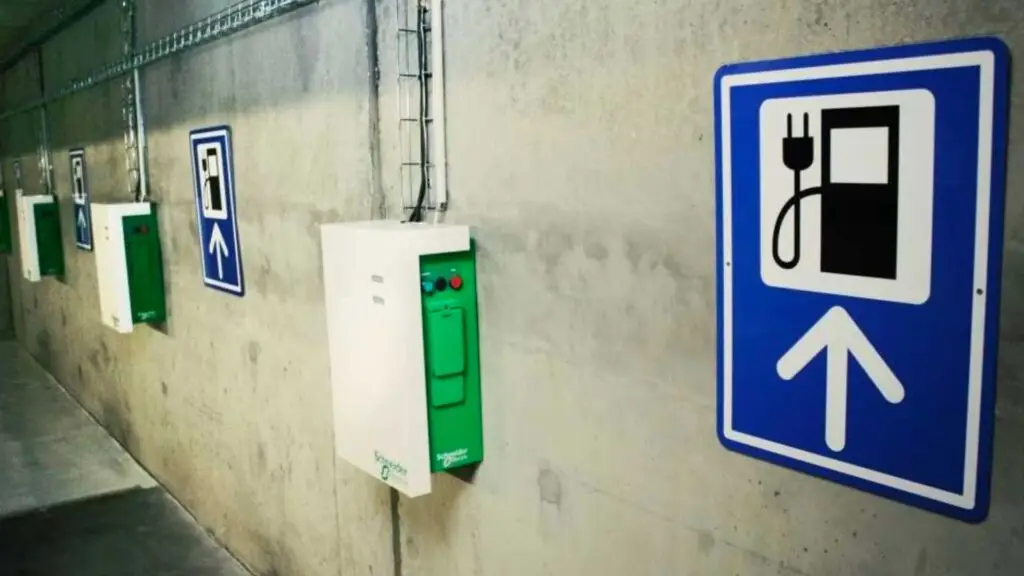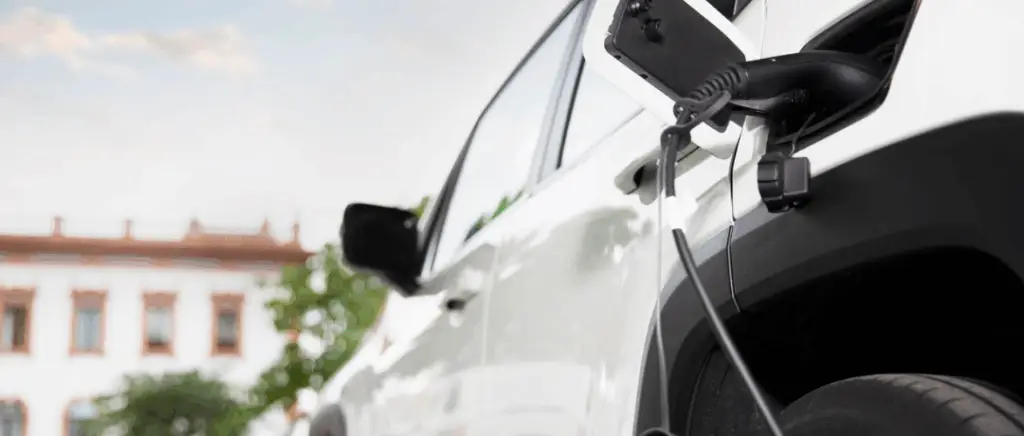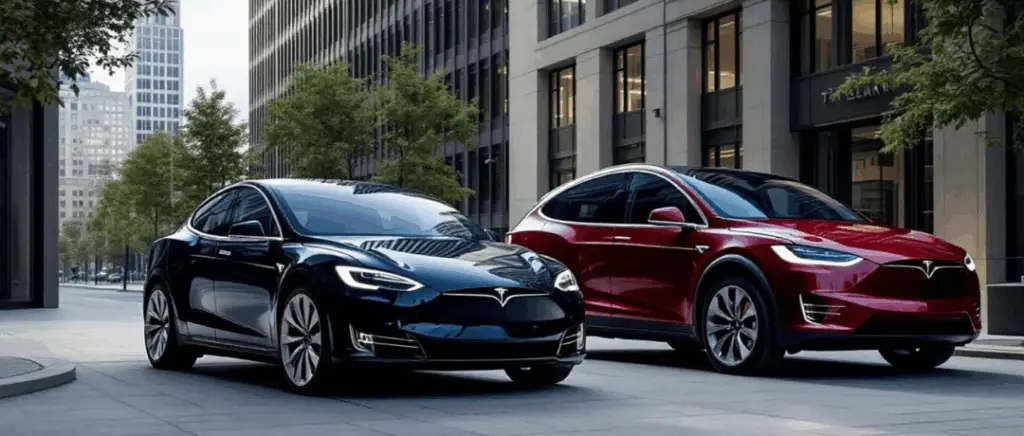your charging point
Installing a charging point in a condominium: "the right to a plug".
What is the right to take?
Le right to take allows anyone living in a jointly-owned property to install a recharging solution in their parking space at their own expense. As a tenant or owner, you have the right to charge your electric vehicle at home.
- New homes :Since 1 January 2012, newly-built condominiums have been required to equip their car parks with charging stations. Charging points can be individual or collective. In each building, at least 10 % of the parking spaces must be equipped with electric charging points.
- Collective housing already built : Since 1 January 2015, residents of multi-family dwellings that have already been built can request the installation of electrical charging points.
What are the conditions for exercising this right?
Published in the Journal Officiel on 24 December 2020, Decree no. 2020-1720This means that, subject to certain reservations, you can install your own terminal:
- for the installation of a charging point classic
- for any tenant who has a parking space for private use, whether covered or outside, enclosed or open.
- where it is possible to have a system for metering and billing individual electricity consumption
In other words, if the bill for your charging point does not affect the other residents of your building and you have a car park, your co-ownership does not have the right to refuse to install your individual charging point. There is no reason to refuse the installation of the charging point as long as the consumption and installation will not cost the other owners anything.
What if the union objects to the installation of the terminal?
Lalawis on the side of the occupier of the dwelling, provided that the occupier meets the three conditions explained above.
"The owner, or where applicable the co-owners' association represented by the managing agent, who wishes to oppose work to enable electric or rechargeable hybrid vehicles to be charged normally using a metering system enabling individual billing of consumption must, on pain of foreclosure, refer the matter to the court of first instance for the location of the building within three months of receipt of the request.
If the general meeting refuses, it is up to the trade union to refer the matter to the Tribunal d'Instance.
Individual or collective installation?
When it comes to installing a charging point in a condominium, you have two options.
Make it an individual or collective installation
Choosing between individual and collective bollards
If you choose :
- Individual installation: The terminal and therecharging infrastructure will both be at your expense. The owner (or tenant) will be independent of the co-ownership and will have to deal with the administrative formalities himself. They will be eligible for the right to take"the co-ownership cannot oppose the request
- Collective installation: The syndic will be entirely responsible for organising all the steps involved in installing the collective infrastructure. He will have to communicate this approach to the co-owners and distribute the cost of the investment among them. The collective installation can be used by the entire co-ownership.
Steps for installing a recharging point
Case 1: You own your home
If you own your home, you must send a letter (registered letter with acknowledgement of receipt) to your building manager.
You can find a sample letter herelink.
At the same time, it's a good idea to start asking for quotes so you can budget for the work and make your choice.
Once the syndicate has received your letter, they have 3 months to respond to your request. Previously, the co-ownership could oppose the request, but since 2021 it can only offer you a better alternative. For example, you could install a collective infrastructure under common agreement, which could be useful to you and to the whole co-ownership.
Case 2: You rent your home
If you rent your home, the application is made in two stages.
- Send a letter to your landlord: the letter must be sent with acknowledgement of receipt. The letter should include a detailed description of the work planned, together with a full installation diagram. Two copies should also be sent to the building association. The owner has one month to contact the syndic. They should send a letter requesting that the matter be placed on the agenda for the next general meeting. It does not require a vote by the co-owners.
It should be noted that going to a general meeting does not mean that the project will be delayed. If the next general meeting is scheduled for a date later than the one planned for the installation, the work can be carried out. The syndic will simply have to report on the work carried out by including it on the agenda for the meeting.
Good to know: installation costs are at the tenant's expense unless the landlord sees an advantage in doing so (higher resale price, higher rent).

I am a tenant
Below is a standard letter to send directly to your building manager

I am an owner
Below is a standard letter to send directly to your building manager
Case 3: Several co-owners need charging points
This is a fairly rare occurrence. The owners send a letter to the condominium association asking it to put the issue on the agenda for the general meeting. The syndicate then decides to equip several parking spaces with charging points. Once the decision has been approved, the association has six months to start the work.
In this case, the cost of the work will be shared byall the co-owners.
Installation: Who to contact?
Beev will help you choose your charging point and draw up a free quote to suit your needs.
What assistance is available?
All private individuals, whether tenants or owners, who have installed a charging point homeowners can claim a tax credit of 30 % of the expenditure incurred if the work was carried out before 31 December 2018. This aid is capped at €8,000 for a single person and €16,000 for a couple without children who are jointly taxed. It will be valid until 31 December 2023.
- Your home must be your principal residence
- The work must be carried out by a company that supplies and installs the equipment, materials or appliances it invoices.
Good to know: using an RGE (Reconnu garant de l'environnement) professional is compulsory if you want to benefit from financial aid to carry out certain energy renovation work. But not when home charging points are installed. The RGE label highlights a company's expertise or specialisation in energy performance.
The amount of tax will be deducted directly from the amount of tax you pay in the year following the work. This system is rather restrictive, however, given the time it takes for the "refund" to be made and the fact that the occupant of the home has to advance all the costs. For this reason, it was envisaged that, from 1 January 2019, the Energy Transition Tax Credit (CITE 2019) would be paid out in the form of a works bonus. However, this deadline has now been pushed back to 2020, and the tax credit ismaintained for 2019.
Where to claim the energy transition tax credit?
- Online declaration :
- On your tax return, under "Income and expenses", in the "Expenses" category, tick the "Energy transition in the main home" box.
- For the purchase of a charging point for electric cars, fill in the "Charging system for electric vehicles" box (box 7BF) and note the amount of the expenditure.
- Paper declaration :
- For paper returns, you will need to download form 2042 RICI, which you will attach to your return. You can download the 2021 version hereor go to the tax website and search for "form 2042 RICI".
- On page 2, fill in the "Electric vehicle charging system" box (box 7BF) and note the amount of the expenditure.

Financial assistance for mobility from the Paris City Council
Paris City Hall is proposingtwo grants for the installation of electrical charging pointsin collective housing.
- A pre-equipment grant of 50 % of the cost of the work (maximum €4,000) for property owners wishing to install a charging point or renovate a riser for electric or hybrid vehicles in their car park.
- Aid of 50 % of the cost of the work (€500 per charging point, maximum 4 charging points), i.e. a maximum of €2,000, for property managers or social landlords wishing to install charging points. charging stations for residents and visitors.
Who can apply?
Applications for assistance must be made by the building's syndic or landlord. It is limited to 1 application per year.
What do I need to do?
- You need to log in or create an account on the Paris City Hall website
- Go to this link.
- Complete the online declaration and attach the required documents.
What documents are required?
- Proof that the building in which the work is to be carried out is managed by the property manager or social landlord.
- Kbis extract
- A copy of the invoice for the work carried out
- A photo of the layout
- The RIB where the sum is to be reimbursed
Good to know, since 1 October 2018, only online applications will be processed.
The Advenir programme
The Advenir programme aims to use the CEE (Certificat d'Economie d'Energie - energy saving certificate) mechanism to boost energy efficiency installations. charging stations in France.
Who can apply?
This aid applies to collective housing: private owners, individuals, social landlords and trade unions can apply. There are, however, very specific specifications to be met in order to benefit from this aid. To find out more, we recommend that you read the Advenir guides.
The request must be made on the Advenir website by the applicant or the commissioned professional.
Good to know that this aid does not apply to detached houses.
What documents are required?
- Select the type of offer you require
- Type of beneficiary: individual or collective recharging solution
- A detailed description of the proposed work or installation
- The estimate for the work
Good to know: to benefit from the Advenir grant, you need to work with a professional who has offers that have been "labelled" by the programme.
| Résidence collective | Taux d'aide total | Plafond | Plafond avec Bonus pilotage énergétique |
|---|---|---|---|
|
Individual solution
|
50 %
|
600 €
|
960 €
|
|
Collective solution
|
50 %
|
1 300 €
|
1 660 €
|
Source : Coming soon
Bonus: The ADVENIR programme now finances 50% for the installation of a collective infrastructure...
In the first 3,000 condominiums...
This new aid dates from 04 July 2019. The government wanted to boost the installation of charging infrastructure in collective housing. The aim is to speed up the installation of charging infrastructure for electric vehicles. The aim is to multiply the current figure by 5 by 2022.
|
Type |
Total aid rate |
Ceiling incl. VAT + Ceiling with energy management bonus |
|
Collective residential: collective infrastructure (excluding outdoor roadworks) |
50% |
4,000 for up to 50 places + €75/additional place for more than 50 places, up to a maximum of €15,000 per condominium. |
|
Collective housing: outdoor roadworks |
50% |
3,000 per co-ownership |
Who can apply?
- Infrastructure connected downstream of an existing building services delivery point.
- Infrastructure connected to a new delivery point with a "star distribution" diagram.
- Infrastructure connected to a new delivery point with an "arterial distribution or BUS cable" scheme.
- Public collective pipe infrastructure coming from the public distribution network and distributing the delivery points serving the IRVE terminals of each user.
What documents are required?
Payment is made within 45 days of submission of a complete application.
When you submit your application
- The minutes of the AGM, clearly indicating the date on which it was held
- A full estimate including any other grants applied for or already obtained
- The network operator's quotation
- Sizing study of the collective infrastructure (size of car park + power balance)
- Proof of the installer's qualifications for the infrastructure
- Proof of IRVE qualification for the installation of the charging point(s)
To receive payment
- Compulsory certificates (Consuel or approved inspection body)
- The invoice for the installation of the infrastructure and the bollard
- Photos of the installation and the bollard
In a nutshell
For an individual (homeowner or tenant), the total amount of aid available for a quote is €2,000.
|
City |
Tax credit (30% of the amount) |
Paris City Council (50 % of the cost of the work) |
Coming soon |
Reste à payer |
|
Paris |
600 € |
500 € |
600 € |
300 € |
|
France (excluding Paris) |
600 € |
0 € |
600 € |
800 € |
In conclusion
Installing individual charging points without property is a right. Your "right to take"You can be sure of being able to charge up at home, as long as you have a car park available. Thanks to the various forms of support available, you can significantly reduce the cost of installing your car charger. charging point in your collective dwelling.
And for those who don't have a car park at home, there's always the option of recharging your car at a public charging point. In Paris, there are numerous recharging points belonging to the town council. And soon, Google Maps can show you where the free recharging points are. near you.
If you would like to find out more aboutsupport for the installation of charging points for private customers in 2024For more information, see our article on this subject.
































